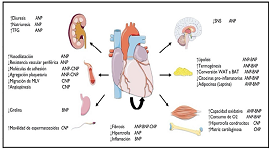
Asia Pacific Academy of Science Pte. Ltd. (APACSCI) specializes in international journal publishing. APACSCI adopts the open access publishing model and provides an important communication bridge for academic groups whose interest fields include engineering, technology, medicine, computer, mathematics, agriculture and forestry, and environment.

Effects of obstructive sleep apnea on cardiac autonomic nervous homeostasis
Vol 4, Issue 2, 2023
Download PDF
Abstract
Objective: To investigate the effect of obstructive sleep apnea hypopnea syndrome (OSAHS) on cardiac autonomic nervous homeostasis. Methods the patients with OSAHS diagnosed in our hospital were the observation group, and the non OSAHS patients in the same period were the control group. The differences of baseline data, sleep monitoring, time domain analysis index of heart rate variability, peripheral blood methoxyepinephrine (MN) and methoxynorepinephrine (NMN) between the two groups were analyzed. The observation group was divided into light, medium and heavy groups according to apnea index (AHI), and the correlation analysis between age, AHI, lsao2, time domain index and blood catecholamine metabolites was carried out. Results: Ahi was negatively correlated with SDNN and PNN50% (P <0.01) and positively correlated with NMN (p<0.05); lsao2 was positively correlated with SDNN and PNN50% (P <0.05), and negatively correlated with vanillic acid 2 (p<0.05). Conclusion patients with OSAHS have obvious disturbance of cardiac sympathetic and vagus nerve balance at night.
Keywords
References
- Khayat R, Pleister A. Consequences of obstructive sleep apnea. Sleep Medicine Clinics, 2016, 11(3): 273.
- Sleep disordered breathing group, respiratory branch, Chinese Medical Association Guidelines for the diagnosis and treatment of obstructive sleep apnea hypopnea syndrome (2011 Revision). Chinese Journal of tuberculosis and respiration, 2012,35 (1): 9.
- Chen E. Research and application progress of heart rate variability. Progress in cardiology, 2014,35 (4): 435.
- Kivinieml AM, Hautala AJ, Mokikallio TH, et al. Cardiac vagal outflow after aerobic training by analysis of high-frequency oscillation of the R-R interval. European Journal of Applied Physiology, 2006,96: 686.
- Song MK, Ha JII, Ryu SH, et al. The effect of aging and severity of sleep apnea on heart rate variability indices in obstructive sleep apnea syndrome. Psychiatry Investig, 2012, 9(1): 65.
- Zhong X, Xiao Y, Huang R. Effects of obstructive sleep apnea hypopnea syndrome on vascular endothelial function and autonomic nerve modulation. Journal of Chinese Academy of Medical Sciences, 2010,32 (002): 162.
- Ma Y, Wen H, Zeng X, et al Analysis of arrhythmia and heart rate variability in patients with obstructive sleep apnea syndrome. Chinese Journal of cardiac pacing and electrophysiology, 2019,33 (2): 34.
- Ji M, Zhou Q. Research progress of vagal activity in heart failure. Chinese Journal of cardiac pacing and electrophysiology, 2012,26 (6): 547.
- Zhu D, Wang T. Physiology. 8th Edition Beijing: People's Health Publishing House, 2013:100.
- Iturriaga R, Oyarce MP, Dias ACR. Role of carotid body in intermittent hypoxia-related hypertension. Curr hypertensrep,2017,19(5):38.
Supporting Agencies
Copyright (c) 2023 Abudixiaokuer Mureti, Yan Feng

This work is licensed under a Creative Commons Attribution 4.0 International License.

This site is licensed under a Creative Commons Attribution 4.0 International License (CC BY 4.0).

Prof. Prakash Deedwania
University of California,
San Francisco, United States




